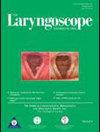Azithromycin Prevents Subglottic Stenosis in Mice
Abstract
Objective
Pediatric subglottic stenosis (SGS) is characterized by subglottic narrowing which occurs when pathological fibroblasts deposit extracellular matrix that reduces airway patency. Recent clinical observations have suggested that azithromycin may have favorable impacts on SGS reduction while treating airway infections; furthermore, our recent work in mice demonstrated that the airway microbiome influences SGS. In this work, we characterize the protective effect of azithromycin as an immunomodulatory and antibacterial therapeutic against subglottic stenosis.
Methods
Immunomodulatory and antifibrotic effects of azithromycin were assessed on TGF-β1-stimulated airway fibroblasts at 10 μg/mL for 5 days. Changes in gene expression were quantified by RT-qPCR and myofibroblast differentiation by α-SMA immunostaining. Murine airways were pretreated (2-weeks) with intranasal azithromycin before SGS injury by a twisted wire brush. Disease severity and immune response were characterized by histology and immunostaining for immune cells.
Results
In vitro, azithromycin treatment of TGF-β1-stimulated fibroblasts exhibited strong reductions in extracellular matrix (COL1A1, LOX) and myofibroblast-related gene expression (ACTA2). Notably, there was a significant reduction in pro-fibrotic expression, which was observed with 10 μg/mL azithromycin. Immunostaining of fibroblasts for α-SMA revealed strong reductions in the number of positive-staining cells and the intensity of each positive cell. In vivo, azithromycin exhibited a significant decrease in lamina propria thickness indicative of reduced stenosis with associated changes in T-cell infiltration.
Conclusions
Overall, we show azithromycin prevents pro-fibrotic gene expression and myofibroblast differentiation and can help protect mice from developing SGS. This introduces azithromycin as a potential treatment for SGS.
Level of Evidence
NA Laryngoscope, 135:409–415, 2025


 求助内容:
求助内容: 应助结果提醒方式:
应助结果提醒方式:


